Large Victorian Roll-Top Bath with original plumbing Resurfaced
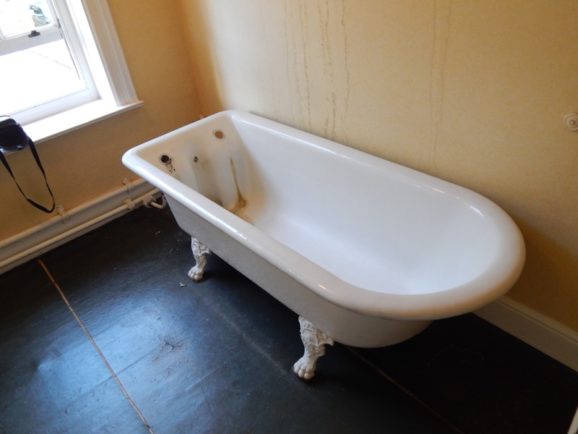
Roll Top bath before Resurfacing
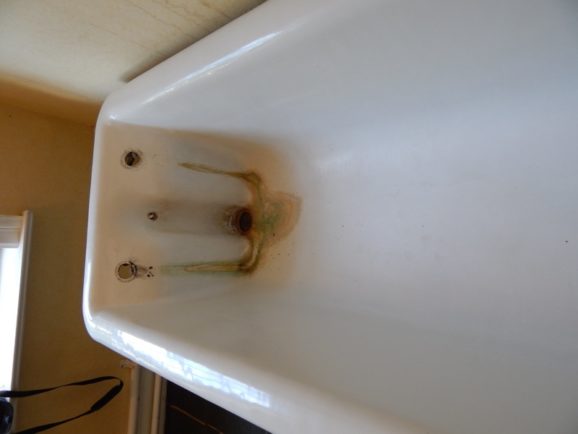
A Roll Top Bath Before The Bath business Restored it!
We were asked to resurface the bath above which was in a farmhouse in the Reading area. What you can’t really tell from the pictures is just how much bigger this bath is compared to a modern standard bath. This one was a beauty!
The bath itself is a great example of an original Victorian roll-top bath which still had the original lead plumbing which you can see below:
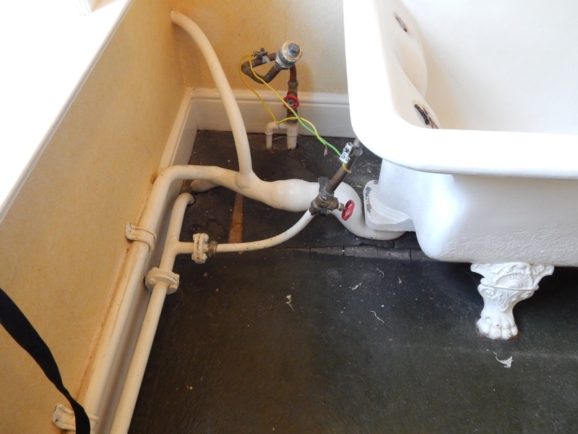
Lead Pipeing
The taps for the bath have been removed by the owner to be restored offsite. We do tap restoration also. (Please note: We could have restored the bath itself with the taps on but it made sense for the owner to get everything done, taps and bath, at the same time)
The bath itself was in very good condition apart from the wear and staining below the taps and around the waste area. Here the staining was very noticeable and unsightly.
Below you can see the bath after it was restored and the staining sorted out:
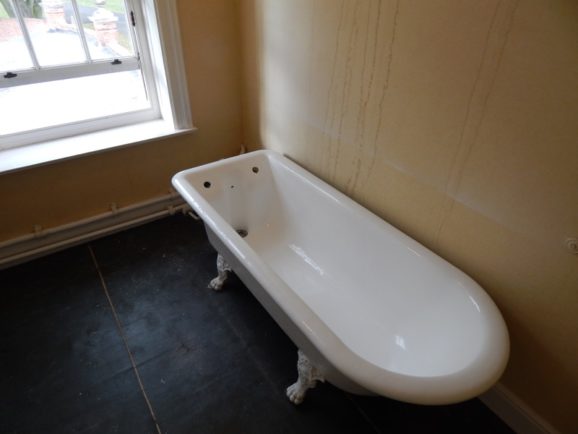
Roll Top Bath after Resurfacing
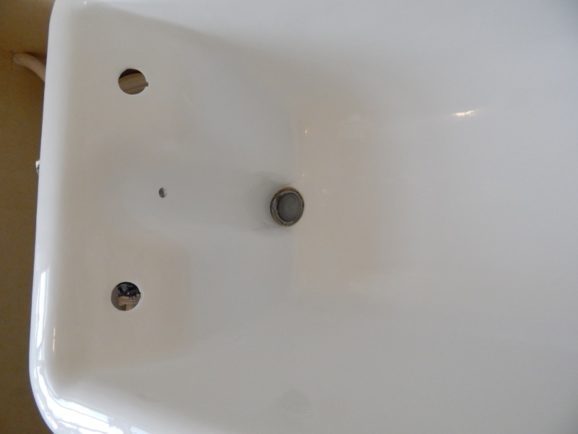
BABY BATH- RESTORED TO NEW
Here is a lovely little original Victorian Baby Bath we restored in our workshop.
These baby baths were originally used to bathe babies in hospitals all over the country. They are quite lovely. The unusual legs makes the bath an ideal size to bathe a baby in. However when Hospitals were upgraded most were thrown out and modern bathrooms installed.
So this little baby bath is quite unusual now. As you can see the bath re enamelled inside and out along with the legs restored has put the bath into great condition.
This bath has beed put up FOR SALE by the client recently. So someone could purchase this for £2500 plus vat.
Contact The Bath Business on 01342324577 for more information.
Renewing a Bathroom Suite
If you have a bathroom suite which is no longer looking its best, or perhaps is a colour that you don’t like any more, then instead of ripping it all out and replacing, another option is to have the entire suite resurfaced or re-enamelled as it is often referred to. This is a more eco-friendly approach to renewing a bathroom suite and the process is a lot less stressful than replacing the whole suite and having to redecorate etc.
Resurfacing, re enamelling, refinishing and reglazing are all terms used to describe basically the same thing. Each is a process of restoring the bath or bathroom suite to its original condition. Any chips or damage are repaired and then the bath is resurfaced. Making the bathtub look and feel new again. This is generally done in situ. The whole suite can be resurfaced in the same fashion. So the toilet and wash hand basin are resurfaced or re enamelled in the same fashion.
A dated avocado bathroom suite can now be restored to white and, depending on the style, made to look ultra modern. Or if you are a bit adventurous you can even have the whole bathroom suite re enamelled to BLACK!
The entire suite can be resurfaced in situ. Often grey or green suites are being resurfaced to white. Some people are having their whole bathroom suite resurfaced in pastel shades of blue, pink or yellow. If need be the suite can be delivered to specialist bath resurfacers and done off site whilst you finish your other bathroom renovation projects.
Any style of bathroom suite can be resurfaced or re enamelled. Traditional Victorian bathroom suites, 1920’s Art Deco bathroom suites and modern bathroom suites, including jacuzzi and corner baths. The outcome is a suite that is rejuvenated and once again looking attractive as well as being very easy to clean.
Any type of bathroom suite can be resurfaced or re enamelled. Most bathroom sinks and toilets are made of porcelain. However the bath can be cast-iron, pressed steel, acrylic, fibreglass etc. A common question is “Can a Plastic Bath be resurfaced?” Absolutely it can.
Corner baths can be tricky but only due to their size. Some corner baths are really large and the dimensions can be difficult for the Bath Re enameller to access the whole bath. It’s best to make specific enquiries from a specialist if you have a corner bath.
The fact that the resurfacing is normally done in situ means that the entire suite can be done in a day, and would be usable the next. None of the fixtures need to be removed. There is no need to replace any tiling or flooring. None of the plumbing is disconnected when the suite is re enamelled so there is no need to remove the bath panel (if there is one). etc. It is a lot less hassle than ripping out your suite, getting in different workmen and then re-fitting a new suite that often is nowhere near the quality of the suite you just threw away because it was grimy or a strange shade of mustard.
If you are considering having your entire suite resurfaced then there are a few points to bear in mind:
The suite will be usable the day after it is resurfaced. If the WC that is part of the suite is the only one in the house, then you may need to make other arrangements for the period it is out of action.
Also, if the toilet seat in your bathroom is one which is likely to get treated roughly (i.e. you have children who may throw the seat down onto the pan), then you may wish to consider replacing the WC as the new surface may well chip were the toilet seat impacts on it with such force. Normal wear and tear however should not result in the toilet chipping.
It also important to note that chips or defects will show up more easily if the bath or suite is having a colour change. For example a recently resurfaced green bath in London was quite badly chipped around the plug hole but the owner had not noticed. The chips were not right down to the metal so it wasn’t really obvious. As the owner was having her bath changed to white the same chips would be clearer. As soon as the plug chipped the bath it would be obvious. A new plug in the style of a chrome plug but made of rubber can be used to replace the plug and prevent future chipping.
Traditional bathroom suites or Art Deco style 1920’s style suites often have elaborate or original taps. Often the bath is in need of re enamelling due to these old taps dripping constantly over the years. It would be a shame to have to get rid of these because the local plumber doesn’t have the part anymore to repair the dripping tap.
Nowadays you can even send your old taps to a specialist to have restored and then either have the brass polished up to a beautiful finish or re chrome plated or nickel-plated. The overall effect is really lovely.
Contact The Bath Business , Bath Resurfacing and Enamel Bath Specialist about any bathroom improvements you wish to carry out.
Bathroom Wallpaper
Bathroom Wallpaper
How Do You Choose the Best Bathroom Taps
If you are considering redecorating your bathroom or perhaps even renovating or remodelling it completely then choosing the correct bathroom taps is very important. The overall style and feel of your bathroom can be greatly influenced by the taps you choose. In fact to update and rejuvenate the whole look of your bathroom you may be able to simply change the taps. If you are lucky enough to have original Victorian or Edwardian taps or perhaps even original antique French taps it may be possible to have them restored.
Some people LOVE traditional bathrooms and wouldn’t want anything else. Certainly the trend does seem to favour this style at the moment. You may prefer a more modern bathroom tap or if your bathroom would look good with large Art Deco taps. Some people like to have their bath taps match exactly their basin taps. This is not always possible if you are installing original antique taps. Quite simply the matching pair of either bath taps or basin taps may have been damaged or destroyed some time ago. If you are fortunate to find a matching pair of antique taps they are well worth installing them into your bathroom.
There are also several different styles of spout for both bath taps and basin taps. The bath tap can have one spout with 2 handles or 2 spouts with 2 handles. Similiarly with the basin taps. Or off course there is the Bath Shower Mixer tap which although typically a very traditional style, compliments any bathroom and does save on plumbing fixtures.
Fortunately, whatever your style, an electic approach tends to work very well. A traditional Edwardian or Victorian cast iron roll top bath looks fantastic with original Antique Taps or modern Deck Mounted Pillar taps. Similarly a modern square bath that may otherwise look quite ordinary can look stunning with lovely original large Victorian bath taps or even reproduction Victorian Shower Mixer Bath Taps. Art Deco taps look great on these baths as well. Most of the time you can get away with mixing and matching modern & traditional taps, baths, tiles, decor etc. The only exception could possibly be an Art Deco style bathroom suit. Although you can put Art Deco bath taps or basin taps on a typically modern suite it doesn’t always work the other way around. Some Art Deco styles are okay. They can look good with a modern wall mounted bath filler (taps with 2 handles to control water flow). The typical Art Deco skirted bath however really needs to have matching Art Deco style bath and basin taps and matching decor to pull the whole look off well.
Before you even look at the different styles there are a few things you do need to know that will help you choose the best bathroom taps.
The majority of bathroom taps are made from brass which can then be metal plated or enamelled. They can be plated with high gloss or matt finishes such as chrome, nickel, polished brass, pewter, silk steel and antique gold. Nickel plating is becoming more popular as this provides the traditional look for a traditional Edwardian or Victorian bathroom. These taps are not necessarily cheap. The style and finish are also important and part of what you will pay for.
More expensive bathroom taps are made of solid stainless steel, which can be polished to a high shine or brushed to create a low sheen finish. Although these are considerable more expensive, they are more hard-wearing than their cheaper alternatives which will eventually lose their finish.
The brass taps, if they have been chrome or nickel plated, should take years to lose their finish. Having the bathroom taps re-chromed or Nickel plated is an option and the finish looks fantastic. The replating in chrome, nickel, antique gold etc can be done to both original antique bathroom taps and fairly modern bathroom taps. You would just need to get your plumber to remove the taps and have them sent to a specialist. You would need to weigh up whether the additional expense of purchasing solid stainless steel taps was worth it.
Antique taps are often in a polished brass finish. This means you will need to polish your bath and basin taps fairly regularly to ensure they look good. If you are lucky enough to have a cast iron plunger bath with a brass plunger and bath taps then having the plunger and taps polished makes the whole bathroom looks sensational and definitely produces the “WOW” factor. They do look great when this is done and a lot of people prefer to keep this finish and undertake the additional cleaning that would otherwise not be required if you installed modern bathroom taps. Frequently people choose to have thier antique taps Nickel or Chrome plated. They look fantastic once done and the bath taps are so much easier to keep looking pristine.
Your budget will probably be the determining factor in which taps you do choose to install in your bathroom. As it is unlikely you will renovate or update your bathroom again soon after doing so. If your budget allows it may be wise to invest in the best taps possible for your bathroom.
What the tap is made from is not the only important factor.
If you are ripping your bathroom out and completely remodelling it then your options are not limited at all. You can install deck mounted bath taps where none existed before if the desire and funds suffice. However if you are replacing existing bathroom taps you will need to look at what is already there as this may limit you. You may love the look of a wall mounted concealed filler but if you do not have the plumbing it is not going to work and you may be better looking at another style completely.
You should also check with your plumber who is installing your taps for you if you have enough water pressure to deal with the requirements of the taps you wish to install. If the pressure required is higher than normal bath taps most supplier will say so in their literature.
Generally speaking, single lever mixer taps require high water pressure, while pillar taps and fillers can function with low pressure.
Once you know this you can get on with the job of choosing and purchasing your taps. Then off course there are the accessories.
Resurfacing a Roll-Top Bath
Here at the Bath Business we resurface a lot of Victorian Roll-Top Baths. This isn’t really surprising when you look at how expensive they are to buy, even second hand. Many people like the classic look of these baths, and in the right setting they can be truly spectacular.

And that keeps demand for them high. So if you have a roll-top bath or any cast iron bath, then getting it resurfaced if it’s not looking it’s best is a very cost effective solution compared to replacement.
Resurfacing or re enameling, a quality bath breaths new life into it. It looks and feels new. The fact that it is done in situ by The Bath Business in less than a day makes it not only economical but also a lot less disruptive than replacing the bath.
The Bath Business can resurface cast-iron and modern baths. We can re-enamel claw foot baths, classic antique baths, slipper baths, roll top baths etc. We can resurface and re-enamel cast-iron, plastic, acrylic or fibreglass baths as well as porcelain.
Recently there has been a move to using roll-top freestanding baths in very contemporary surroundings. This can work surprisingly well.
A recent customer had had his bathroom completely re-done, but wanted to keep the roll-top which was original to the house. So he decided to have The Bath Business come and resurface his bath.
He’d had taps installed which were on a stand-pipe, separate from the bath itself. The taps were a mono-block design, done in chrome. The stand pipes were in chrome too. (Another way to achieve a similar affect would been to have the taps coming out from the wall above were the bath was to be positioned.)
So the bath was not going to have any taps on it at all, which gave it a very uncluttered, modern look
However, this left the problem of what to do with the old tap holes. The Bath Business were able to fill the tap holes and resurface the bath. The end result of that was a bath which looked like it had never ever had taps, thus giving him a bath which was both original but also thoroughly in keeping with the bathroom make-over.
Services include: bath re-enamelling, bath chip repairs, bathroom suite, enamelling, bathroom renovation, re-enamelling, resurfacing, bath re-surfacing, enamel repairs, chipped enamel, cast iron bath, bathtub refinishing, bath tub resurfacing,
Bath Resurfacing, A Brief History
Bath Resurfacing, as a professional service, is a relatively new industry, dating back decades rather than centuries. The oldest company in the UK that is still resurfacing baths is in its 4th decade.



However, once bathrooms were pretty much ubiquitous, different industries and services came to be built up around them. One of these was Bath Resurfacing.
Bath Resurfacing itself is an off-shoot of the car refinishing trade. In fact, in America, the usual term used to describe the trade is “Bath Refinishing”; not “Bath Resurfacing” or “Bath Re-enamelling”, both of which are the terms mostly used in the UK. At The Bath Business we describe what we are doing as ‘Bath Resurfacing’ generally. We feel it best describes what is actually being done to your bath.
Although there are quite a lot of companies that do Bath Resurfacing professionally, and each of these may have their own system or materials they use, the one common denominator is that all of them spray on the new surface. And the techniques and methods used have been derived from the car refinishing trade. Bath resurfacing has been around long enough now that many who do it may never actually have sprayed a car (I’m one of them) but this doesn’t change where the industry itself sprang from. And fortunately as materials and techniques improve in the car industry, the benefits of this can be used when resurfacing a bath.
Many of the tools, equipment and techniques would be fairly familiar to anyone who has spayed cars, although there are some differences due to the fact of where you are working and what you are spraying.
Many of a car sprayers’ tools will be run by compressors. In other words, they are air driven. Not just his spray gun but other things such as polishers, sanders, etc are all air driven. But compressors are bulky, heavy items, even small ones; so for mobility purposes, most bath resurfacers will use electrical sanders and polishers.
Again, the primers used by a bath re surfacer will often be different as the surfaces he is spraying onto are not the same as a car sprayer. The Bath Business uses a primer or bonder that has been designed specifically to adhere the new surface to the enamel bath. Without this special bonder the new surface would not adhere, or if we did do something to make it adhere of the bath then chipped there would be a problem. Our special primer ensures that if you chip the bath at some point the surface is adhered so well that no water can then reach under the new surface.
The car industry is the major mover and shaker in the development of spray paints and systems. For example, in the mid 90’s BMW unveiled its development of a water-based, coloured base-coat with a clear lacquer sprayed over it. At the same time, other companies were spending a lot of money doing research and development of water-based systems for cars. A lot of bucks have been spent on this. And the result of all this is that today cars are sprayed with a water-based coloured coat with a clear lacquer on top.
These developments trickle down to the Bath Resurfacing industry.
The idea of putting a new surface onto a bath is, however, not a new one at all. In fact it probably pre-dates the cast iron enamelled bath itself.
The first enamelled cast-iron baths began to appear in the late 1800’s, around 1870 and 1880. (Interestingly, one of the figures credited with its development was David Dunbar Buick, who is much better known for going on to found the Buick Motor Company in 1903. The success of this company [although not run by Buick himself by this point] went on to fund the formation of General Motors.)

Prior to this the baths most people used were made of galvanized metal. The kind of thing you see in a western movie where the hero is soaking in a tub with his hat on, smoking a cigar. Once he’d finished, the water would be tipped out and the bath hung back on the wall.
These galvanized baths began to get painted on the inside. I came across one of these baths which had been installed into a bathroom. The old man who owned the property told me that when he was a child, the bath was painted once a year and he was the one sent to get the paint. I got the impression that there was a specific paint which was used. Very like the DIY kits you can get today, of which “Mr Tubby” is probably the best known. They can be covered in layers and layers of old paint. Stripping this off is definitely not a job for the faint hearted.
The Bath Business delivers a professional bath resurfacing service. We resurface bathroom suites, baths, sinks, toilets and shower trays. We also deliver a professional invisible chip repair service again to baths, sinks shower trays etc. So we don’t sell DIY kits. We do suply a chip repair kit to our past customers and we are looking at supplying our materials and system to other professional bath resurfacing companies.
When exactly painting galvanized baths started as a practice is something I’m not sure of, but is does seem to be the earliest example of Bath Resurfacing, and as I said, may even predate enamelled cast-iron baths.
Bath Resurfacing as a profession is, today, practised in many countries, but to say it is world wide would give a slightly wrong impression. It seems to be based mainly in those countries with a strong anglo-saxon culture or bent. America, Australia, Canada, etc. In a lot of countries, the idea of having a bath is somewhat odd and not really part of the culture. Hence, no Bath Resurfacing.
There are some gaps in what’s been written here, and if anyone has some information that I’ve not, I’d really like to hear from you. Some of the things I’d like to know are: Where did Bath |Resurfacing originate as a professional service? When? What were the first materials and equipment used?
I’d guess that the answers to these are that it was North America, probably after WW II and that Epoxy Resin was what was sprayed. But there are guesses. If you know more about this, please e-mail me at thebathbusiness@live.com and I can include it here in this article. Thank-you.
If you want to know more about the services we provide at The Bath Business then please look at our website, https://www.thebathbusiness.co.uk
We operate on London, Edinburgh, Surrey, Kent, Brighton, Manchester, Birmingham,Glasgow and throughout the UK.
Services include: bath re-enamelling, bath chip repairs, bathroom suite, enamelling, bathroom renovation, re-enamelling, resurfacing, re-surfacing a bath, enamel repairs, chipped enamel, cast iron bath sales, bathtub refinishing,bath tub resurfacing,
A day of work in Sheffield
- At February 25, 2009
- By
- In bath chip repairs london / bath enamel / bath re-enameling UK / bath re-enamelling UK / bath re-surfacing edinburgh / bath re-surfacing london / bath renovation london / bath resurfacing / bathroom renovation / bathroom suite / Bathrooms london / chipped enamel / enamelling / shower re-surfacing / the bath business
04/02/09
I travelled all the way to Sheffield today. It looks like they had had a lot of snow. We have employed a chap to cover this area specifically but I do like to do the odd job myself, especially when we are really busy. Sheffield is really rather nice.

I got to the job. A very pretty roll-top bath from 1928 was the bath to be resurfaced. It was in excellent condition too. But the customer wanted the holes for the taps filled and that area to look like it had never had taps. He had the new taps coming in over the side of the bath from above. So I filled the holes and resurfaced the bath. Can you tell where the tap holes where? I hop not.


The house was having a lot of work done to it; an extension being added and so on. One of the sparkies said something to me I didn’t catch. I asked him what he’d said. He laughed and said (refering to my Scottish accent), “Tha’ talks worst than ma!” “Black”, “kettle”, “pot” and “calling” are some words which spring to mind. And most people think i sound American!
Heading back to the motorway from Sheffield, you pass a church with a crooked spire. I hope you can make it out in the picture. I am pretty sure the spire is meant to be like this.Quite a sight. Does anyone have any information on that Church spire?

Changing the Colour of a Bath
We can change the colour of your bath. Or restore the colour of an existing bath that has gotten worn or damaged.
Generally the colour required is made on-site, matching it to an existing coloured fixture. This is quite a time consuming process so it adds a little bit to the price compared to restoring a bath to white.
If you don’t require or need you bath resurfaced to match existing fixtures, but just want it coloured (for example, someone requested their bath be resurfaced in black) then the colour can be obtained ready made and this brings costs down.

If you have a roll-top style of bath, then usually the outside of the bath is painted, often in a strong, bold colour. The specialist materials we use for the inside of the bath are not required, although if we do the outside for you in white we will use these materials.
This is something you can do yourself as the finish on the outside is not as critical as on the inside. After all, you are not going to be sitting, naked, on the outside. Nor is it going to be getting immersed in water.
If you do plan on doing the outside yourself, I’d recommend not using a high gloss finish as the outside of a cast iron bath is often quite rough and pitted and a glossy finish will just highlight this. A satin finish should look much better.
Also, doing the feet in a different colour helps to draw attention to them, and if you have clawed feet or the like (some of these baths can have quite impressive feet with a surprising amount of detail) then a different colour is really worth considering.
Or, if you prefer, we can do it for you.
Services include:Bath Re-enamelling bath chip repairs, bathroom suite, enamelling, bathroom renovation, re-enamelling a bath, resurfacing, bath re-surfacing,enamel repairs,chipped enamel, cast iron bath, bathtub refinishing, bath tub resurfacing,
When Should One Look at Having a Bath Resurfaced
Bath tub refinishing, Bath tub Resurfacing
The majority of the baths we resurface are done because the bottom area of the bath has become dull, rough stained and hard to clean. These are, almost all of them, cast-iron baths.
Pressed-steel baths and plastic/acrylic don’t usually have this problem to the same degree because their finish is tougher and more resistant to chemical attack by modern cleaners, acidic water and so on.However they can become patchy and look bleached as well as suffer from lime-scale and off course they can be chipped or damaged in some way. As far as repairing a bath is concerned we do more repairs to pressed steel and plastic baths but not so many repairs to cast iron bath.
We also get asked to do baths to handle things like chips in the bath or to change the colour of a bath or cover in tap holes when taps have been moved (onto the wall, for instance).
We do also resurface some pressed-steel and plastic baths, particularly when removing them would result in expensive redecoration. Pressed-steel baths are prone to chipping but apart from that they usually last very well. They can become discoloured and a bit rough. Once in a while you come across one that has had damage done due to corrossive cleaning agents, but compared to cast-iron baths this is relatively rare.
So of the pressed-steel and plastic baths we resurface, the main reason for resurfacing tends to be to change the colour (currently the trend is to get a coloured bath changed to white) or to give the coloured bath a new lease of life.
Resurfacing versus replacement?
I suppose as it’s my business I ought to say it’s better to resurface. However, I think there is a valid case for both depending on what kind of bath you have and where it is fitted in the bathroom. Also it depends on what you are planning to do with your bathroom. Another factor is what will be what is the most cost effective. And finally there is the age of your home.
For example, if you are planning to completely change around you bathroom, moving the fixtures and so on, I would replace the bath if it is a pressed steel or plastic bath, as these are quite inexpensive, easy to get hold of, and you are already going to be redoing the plumbing, plastering, tiling and so on.
If you have a cast iron bath then it may be more sensible to keep it and get it resurfaced, especially if it is a roll-top or 1930’s style of bath. These are not easy to replace and costly to buy even second-hand and are very desirable. If you are planning to get rid of a roll-top, then don’t throw it out. Sell it! People want these.
If you have one of the plainer cast iron baths from the 1950s or ’60s (these baths are usually large and boxed in) and you are planning to completely change around your bathroom then you may well be better to replace it with a plastic or pressed steel bath. I think in this instance it comes down to personal preference. Some people like the fact that a cast iron bath feels substantial when they are in it and these baths tend to be a bit deeper and wider. Others like the modern designs you can get with plastic baths. If you are a bit bigger like myself then a cast iron bath is a must have. But as i said it is down to personal preferences.
If you just want your existing bath to look better and are not planning to change things around in the bathroom (and this is the scenario in the majority of the jobs we do) then resurfacing becomes a good option because it will generally be cheaper, easier to organize and the bath will be out of commission for a shorter period of time (with us you will be able to use the bath the next day).
But even in this scenario, if you live in a modern house, it may be as cheap or cheaper to replace your existing plastic bath as it will be a standard size which is easy to get hold of and not expensive. It should be quite straight-forward for a plumber to change the baths around so his costs will not be great. You shouldn’t need to re-tile as the new bath ought to slot right in where the old one was.
But even with new-build houses there are exceptions. I recently did a plastic bath in a new-build flat for a single guy. He wanted it resurfaced because he worked all week and didn’t want the hassle of trying to source a new bath and organising a plumber and having to take a day off work to let the plumber in. As I was willing to work on a Saturday then resurfacing, for him, was a better option.
If you are not sure what would be best for yourself in terms of resurfacing you bath or replacing it, please feel free to e-mail me and I’ll do my best to help you out.

The Bath Business –
Repairing chips in a bath
We can repair chips in a bath. If the bath itself is in pretty good condition and just has a chip or two, then rather than having the whole bath done, the chip itself can be fixed. It is cheaper than resurfacing the whole bath. This repair service works best on a relatively new bath where one or two chips exist. Also we can repair small cracks or holes in the bath.
I wouldn’t recommend doing a chip repair if the bath is starting to feel a bit worn and rough, especially if the chip is in the worn area. The area repaired will have a different texture to the surrounding area and as the old surface is rough it will tend be hard to clean and discolour, making the repair very noticeable.
Another point to make in relation to chip repairs is that even if your bath is white, we will still need to colour match the repaired area to the existing bath otherwise you have two different shades of white right next to each other and the repair stands out like a sore thumb.
Probably the majority of repairs we do are on pressed steel baths, as these are especially prone to being chipped.
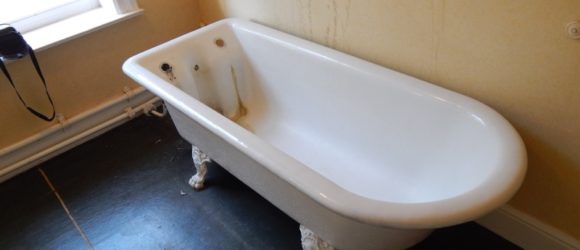
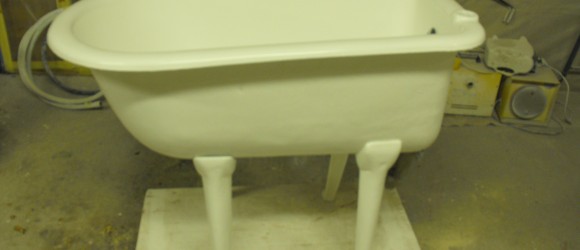



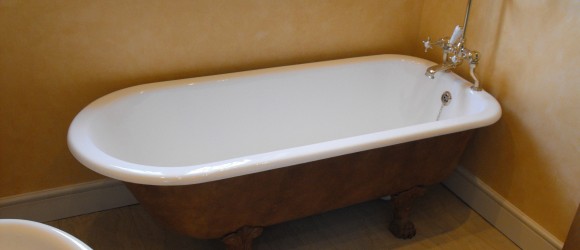





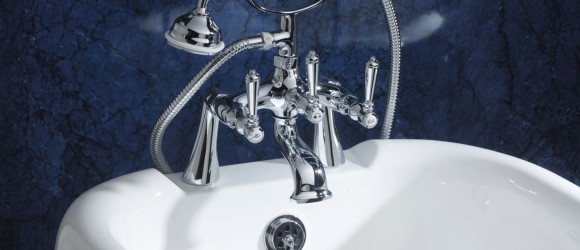










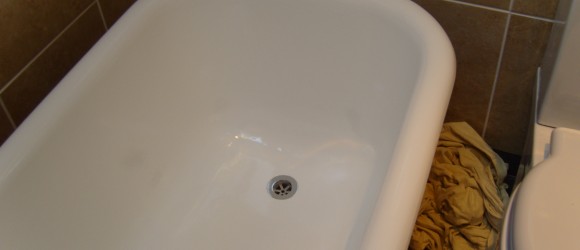











 Add us to your circle
Add us to your circle